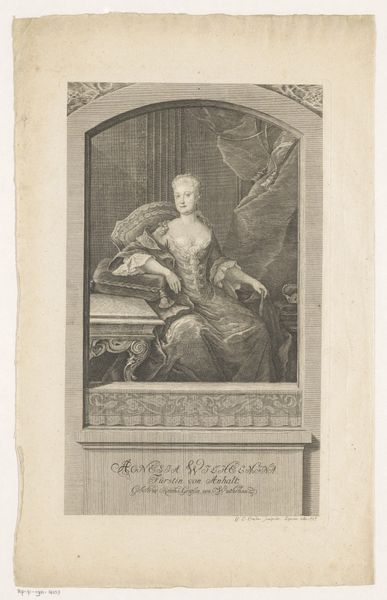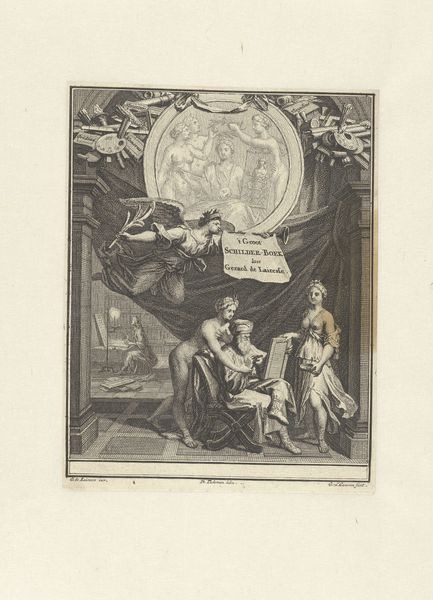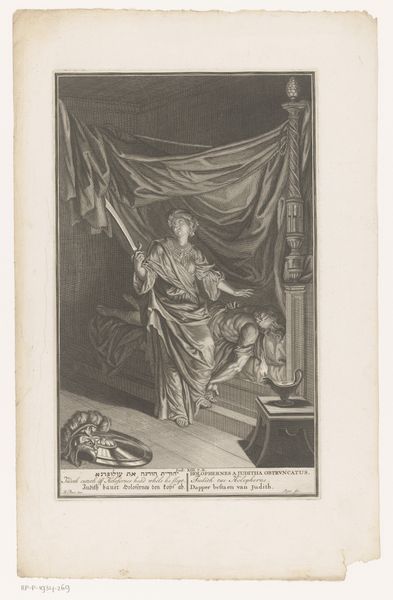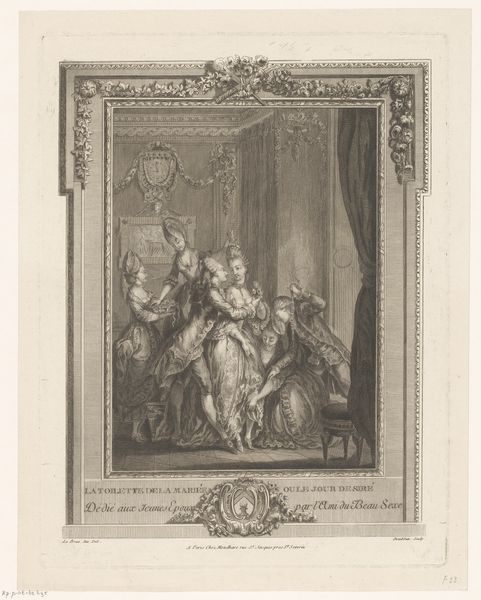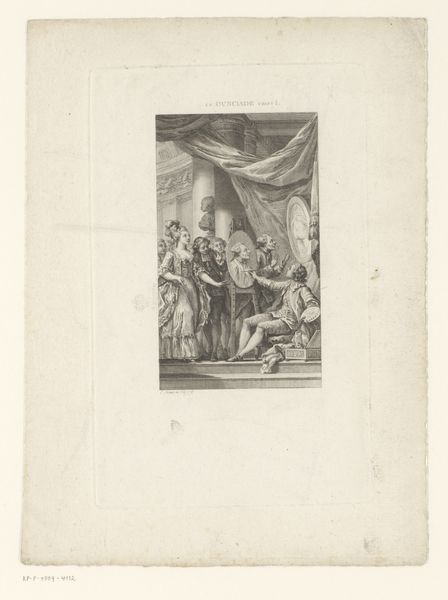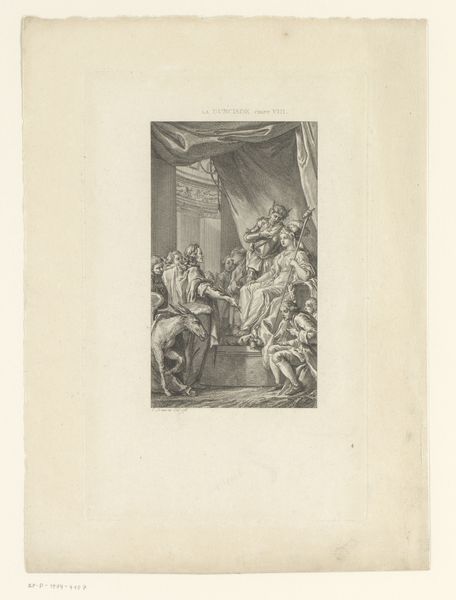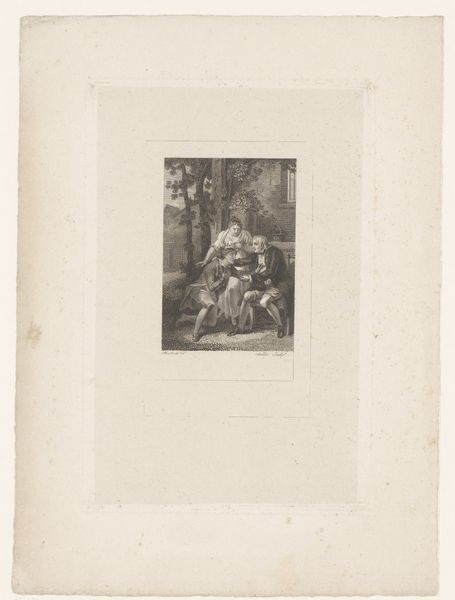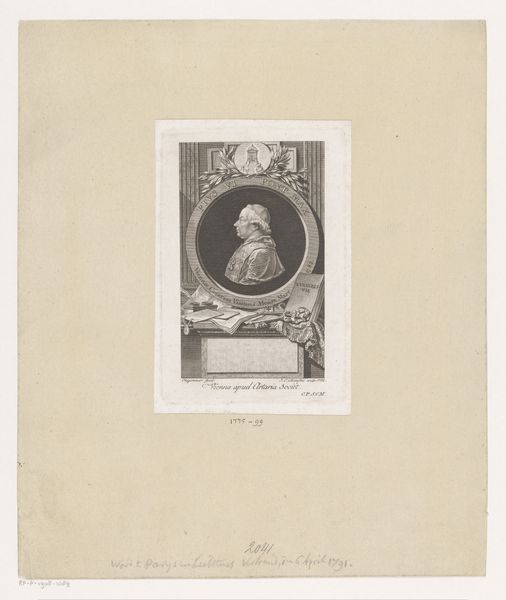
Portret van Agnes Wilhelmine Füstin von Anhalt before 1757
0:00
0:00
engraving
#
portrait
#
aged paper
#
toned paper
#
baroque
#
old engraving style
#
genre-painting
#
history-painting
#
engraving
Dimensions: height 293 mm, width 179 mm
Copyright: Rijks Museum: Open Domain
Gottlieb Leberecht Crusius created this portrait of Agnes Wilhelmine Füstin von Anhalt using etching, a printmaking technique that democratized image production in the 18th century. Here, we see etching's capacity to render subtle tonal variations. The fine lines create the illusion of light playing across the sitter's dress, the draped curtain behind her, and the architectural elements framing the scene. The controlled and repetitive strokes speak to the labor involved in creating the matrix from which multiple impressions could be made. Etching allowed for the wider circulation of portraits. Consider how this print, infinitely reproducible, contrasts with unique, hand-painted portraits. It speaks to a shift in social dynamics, where images of nobility became more accessible. So, next time you look at a print, think about its materiality, the labor, and the context that gives it meaning.
Comments
No comments
Be the first to comment and join the conversation on the ultimate creative platform.
